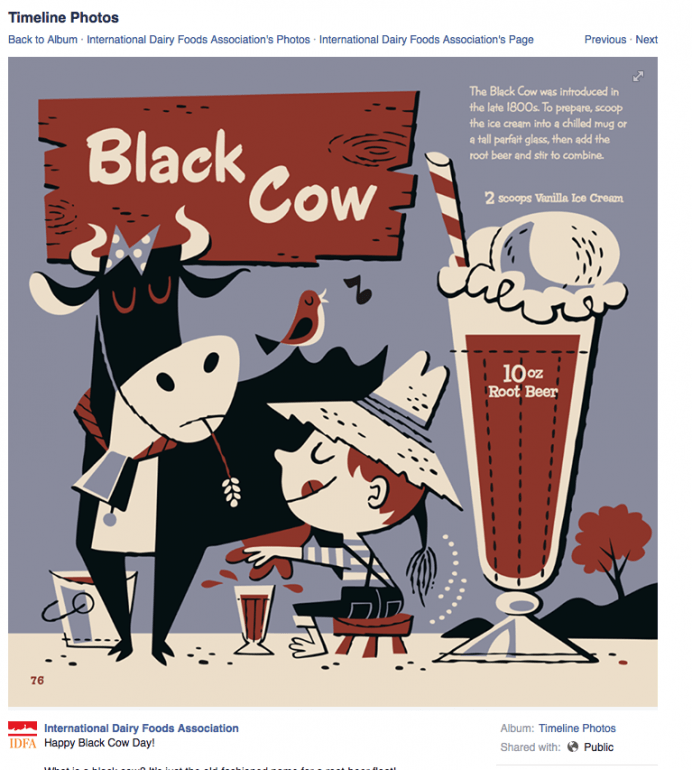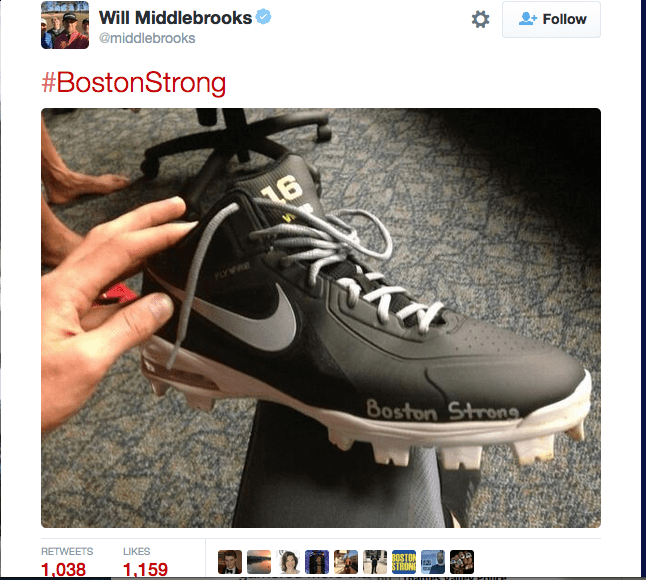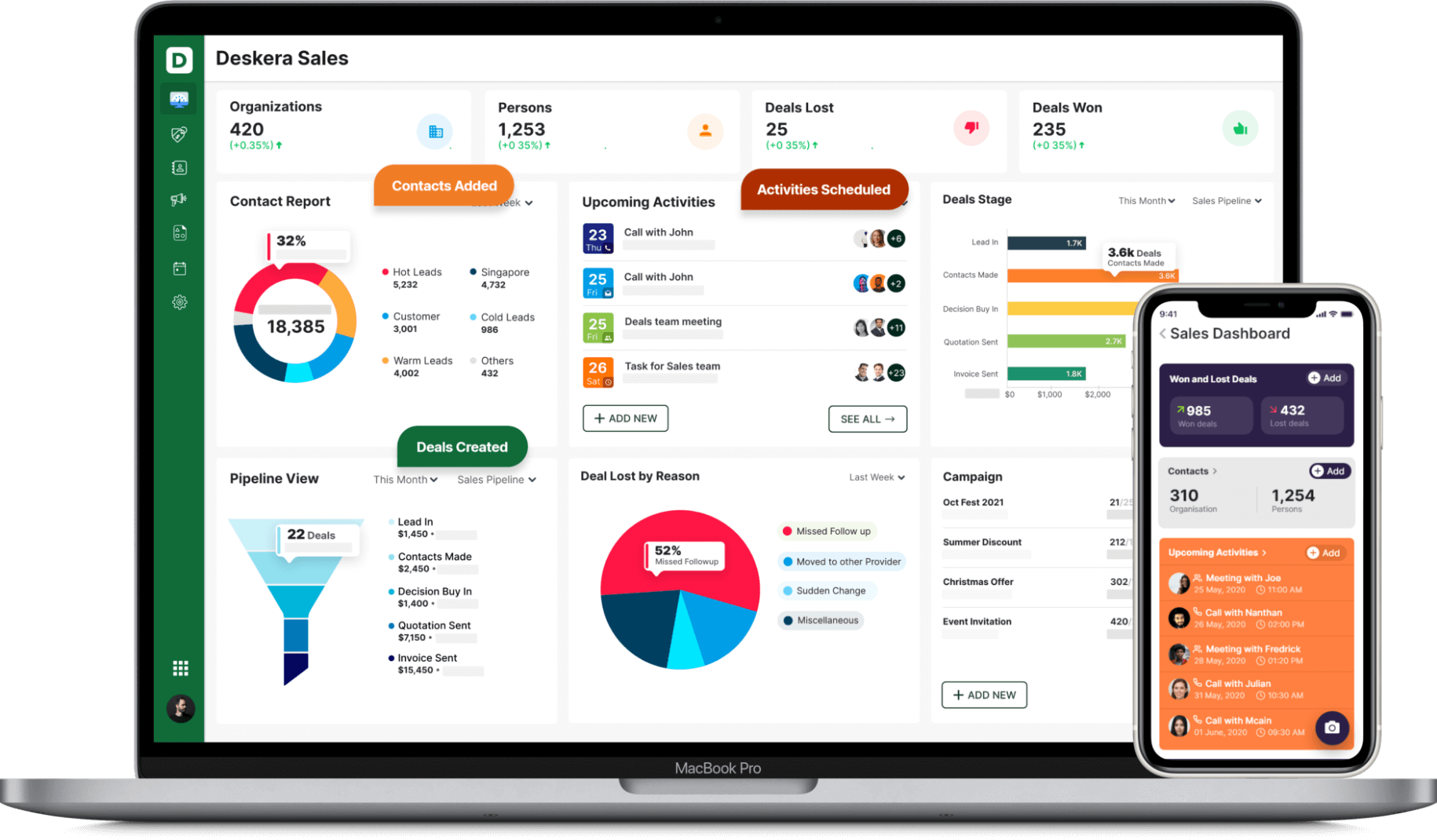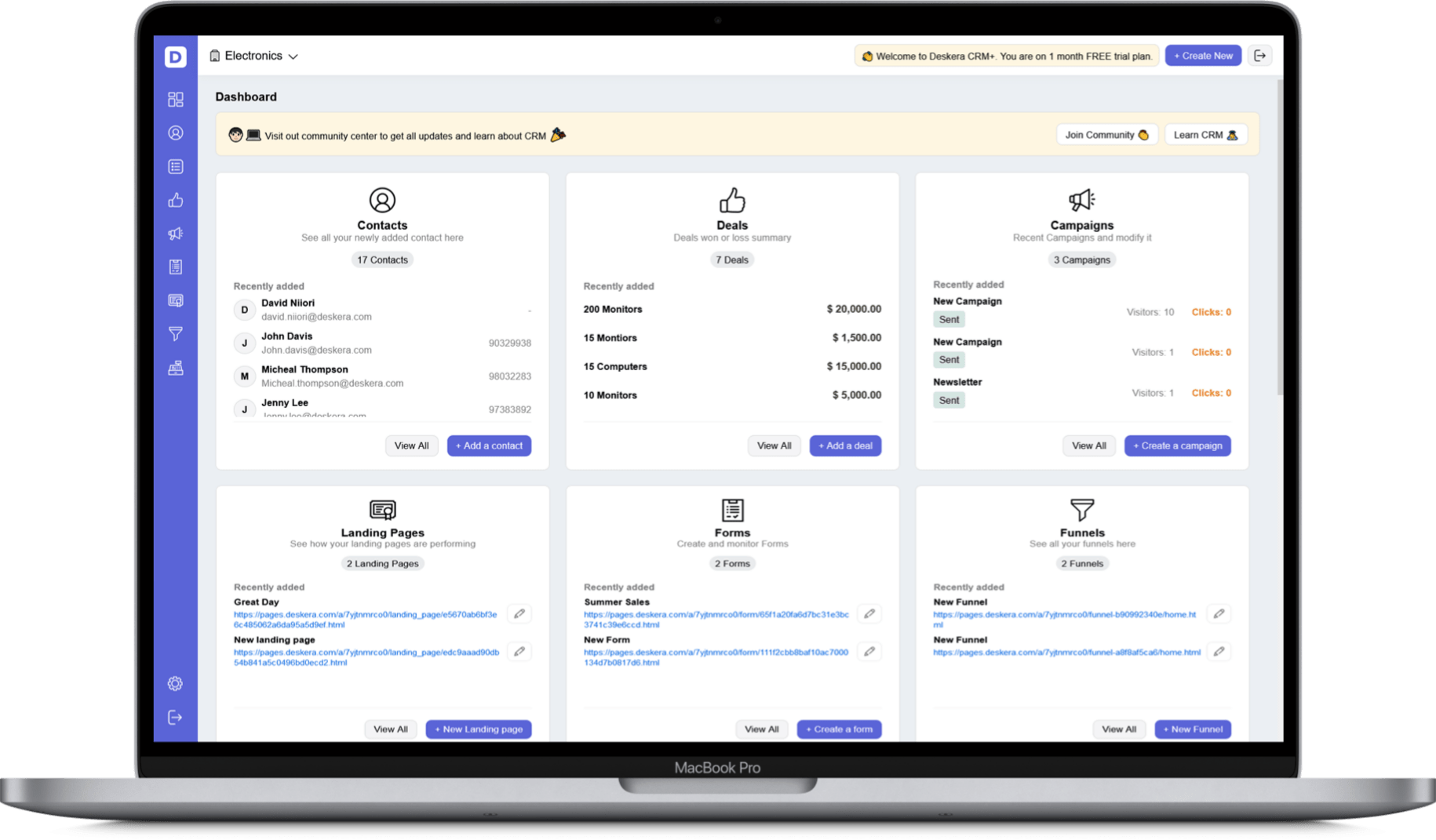Grassroots marketing is a marketing strategy that attempts to target a high niche audience to make them propagate the brand message organically to a larger audience and thus, amplify the brand’s visibility in the marketplace.
Remember the Occupy Wall Street Movement? The 2011 movement that involved millions of people, all joining together in a protest against the shady and unethical practices of Wall Street?

It all started with a few, who were fed up with the system and wanted to take action to change. The movement later snowballed into a much larger enterprise. This is what grassroots marketing is.
Grassroots marketing is one of the most effective and economical marketing strategies which most companies are inclining towards to spread product awareness these days. Let us find out all about grassroots marketing in this article.
This article will explore the following areas:
- What is grassroots marketing?
- Why is grassroots marketing important?
- Strategies for grassroots marketing
- Tips to improve grassroots marketing
- How to start grassroots marketing?
- How to optimize grassroots marketing?
- Grassroots marketing Vs. guerilla marketing
- Best existing examples of grassroots marketing
- How to scale grassroots marketing
- How can Deskera assist you?
What is Grassroot Marketing?
Grassroots marketing is a marketing strategy that attempts to target a high niche audience to make them propagate the brand message organically to a larger audience and thus, amplify the brand’s visibility in the marketplace.
Instead of reaching out to a larger segment of the consumer population, marketers try persuading that niche audience to spread the word and advocate their products or services amongst their peers.
It’s important to realize that grassroots marketing doesn’t have to be done on computers. It’s a marketing concept that has been around longer than the internet, yet marketing experts have seen its evolution by incorporating techniques to optimize grassroots campaigns for the modern age of digital marketing.
Every coin has two sides; similarly, grassroots marketing has pros and cons that you must be aware of, so let us take a look at it.
Pros of Grassroot Marketing
Cost-Efficient
As business owners, what you want is for your strategies to not burn a hole in your pocket. You need to make every single dollar of your budget count. You impress investors with your frugal spending habits, and you’re making good on paying back the loans you’ve acquired. However, you need to spend money to make money. One of the ways you’re going to make money is by marketing your business with digital and traditional marketing techniques recommended to you by professionals.
The biggest benefit of experimenting with a grassroots marketing campaign is the low cost associated with this strategy. Most traditional marketing campaigns will take a large chunk out of your budget, and digital marketing techniques require constant maintenance to achieve success. However, a grassroots marketing campaign has the potential to bring in plenty of customers without being a drain on your company funds.
Direct Interaction With Consumers
If a brand directly appeals to the audience interactively and puts forth its perspective, it makes an impressive mark on the consumers and portrays itself as being a socially proactive brand.
Boost Local Reach of The Business
Grassroots marketing drives can help businesses impact society, especially the local communities. Community events are an interesting and engaging way to interact with consumers, and the cost of getting involved with local events is inexpensive. Like for instance, some community events or collaborations with NGOs can draw people’s attention towards both the brand and the cause.
Helps Build Customer’s Trust
We all need that one brand we can trust; however, in today’s era of advertisements overload, it isn’t easy to figure out whom to trust and whom not to. Hence, people put more trust in recommendations from known ones. Grassroots marketing uses this referral marketing strategy to gain consumer trust.
Targeted Reach
Billboards and radio ads are an essential part of advertising campaigns because they allow you to have a large reach and really get the word out. However, they often have to use more general messaging in order to resonate with a mainstream audience.
With a grassroots marketing campaign, you focus on a specific audience and tailor the message specifically to them. In grassroots marketing, it’s very important to know the behaviors of your target audience, so you can create something that will impact them.
Marketing Through Voice of Others
The main reason that this strategy is such a successful marketing technique is that you are relying on the brilliance of those around you. Influential people and brands already exist, and they have crowds of followers that continue to come back to them for more recommendations on products and services.
There are influencers in politics, entertainment, sports, medicine, and other industries. These individuals continue to impact their audiences through their works, so getting one of their voices to talk about your company will put your brand at the tip of each of their fans’ tongues.
A Loyal Customer Base in No Time
It’s rare to find a marketing strategy with the potential to gather large groups of loyal customers in such a short span of time, but several companies have demonstrated how it’s possible through the use of a grassroots campaign.
When grassroots campaigns work like they are intended, the brand behind the campaign does more than gain attention for their cause. The end result is consumers gaining trust in a brand, and this type of relationship is the pinnacle of success in marketing a product or service.
By using grassroots marketing, major brands have created conversations with consumers without actually being the voice that’s speaking to the consumer. This technique incorporates a common medium to which consumers will listen. If an influential individual or company recommends your product or service to consumers, more people are going to want to take a look at what your company has to offer.
A Real Approach
Grassroots campaigns, when done well, can feel much more authentic and “real” to consumers than typical advertising. This means that your target audience may spend more time, focus more attention, and otherwise engage more deeply with your message. Not to forget, if a message feels both authentic and relevant, the target is more likely to share the message and spread it even further.
Well, this was the good side of things; now, let us look at the cons of grassroots marketing.
Cons of Grassroots Marketing
It Takes Time
Grassroots marketing takes time. No matter how well you treat your customers or spread your message through social media, you probably won't be able to reach a large group quickly unless your content goes viral, an outcome that you can't possibly predict or control.
Your grassroots marketing campaign will require patience, so this is not an effective approach to use if you need to quickly recoup a large investment in research and development.
Not Under Control
Although you can control many of the ways your grassroots marketing messages reach your audience, some of the outcomes of this approach are beyond your control.
Referrals are powerful and effective, but negative reviews gain at least as much traction as positive ones, and you'll probably have some dissatisfied customers no matter how well you treat your clientele.
Social media campaigns can be carefully planned and researched, but tastes and trends change rapidly among social media audiences, and your content may start to feel old.
Not Predictable
Grassroots marketing can also have limited effectiveness if it is the only strategy you use. Because it is so difficult to predict which grassroots approaches will be effective, it's prudent to combine these efforts with some traditional advertising if you have the budget to do so. The messages will reinforce each other and create synergies as customers learn about your brand through multiple channels.
Higher Productions Costs (Sometimes)
Many advertisers learn that producing an effective grassroots campaign can be very costly, even to the point of competing with mass media budgets. Production of highly specialized campaign elements, manpower or street teams, talent, video, and other components can be expensive.
Now that we have what grassroots marketing means, its pros and cons, let us look at some of the examples of grassroots marketing examples.
Simple Yet Effective Strategies for a Successful Grassroots Marketing
Give Out Product Samples
Take advantage of trade fairs to showcase your product and services. If you run a restaurant, you can give up some samples of your product for potential clients to have a feel of your services. For those into pets and veterinary services, you can organize a free animal check-up service.
Make Use of Social Media
Social media is a great tool. Once you have gotten used to it, the dividends are great. Develop a corporate Facebook Fan Page and a Twitter account. Make sure you pay attention to demographics so you can target clients in your neighborhood
For business owners who are not tech-savvy, the services of a social media manager can be hired to manage the accounts for optimum results.
Sponsor Prizes
If you want recognition in the market, this can be a good grassroots marketing strategy, especially if you plan to go local. You can sponsor some or all of these prizes. Give something great and attractive. It could be a cute gift pack or gift card to your store. The payoff could be worth the effort.
Collaborate or Partner with Other Businesses
Make some inquiries and find that which relates to your area of specialty. Join one; by doing so, you will be able to relate to other businesses in the same niche. Seek out creative ways to promote each other’s business. Be open to new ways of doing things as we are always learning.
Do Charity Events
Running charity events is an outstanding way to get news about your business around and to help the less privileged. This can be done in a variety of ways. You can foot a portion of their bill or send them all the proceeds from a raffle. You could also organize campaigns to raise funds for them. This is a great way of making your presence felt in the neighborhood.
Word of Mouth
An efficient way to market your service to consumers is to get people to recommend your goods and services in their immediate sphere of contact. This could take some time to gain momentum; however, its effect is very powerful once it gets going.
Companies can commence their own word-of-mouth campaign by staff telling others about company services and even hiring people to provide solutions to questions posted by clients on internet message boards.
Use of Referral Bonuses
Exploring the possibility of getting new clients is a great idea as you never can tell who will become a long-term customer. In order to maintain a stream of new clients, one grassroots marketing strategy is to give out bonuses to clients who refer new customers. Give out something that is worth the referral effort. You can even run a contest for clients who refer the most number of clients.
Client Testimonials
A well-structured grassroots marketing plan can get the participators so involved that they may not know that they are involved in a marketing plan. A boat or car dealer may request clients to take photos or make a video with their newly-acquired cars and send it to the company.
These videos can then be used as a basis for advertising. Since these are not actors, words will spread faster than normal about the adverts; grassroots advertising has already commenced from that point onwards.
Interviews with Local TV Channels
This is a great way of getting in the spotlight. Secure an interview with a popular TV host in your area. During such sessions, talk about the benefits of your service to your immediate community. This could be done on TV as well as radio. It gets the word around faster than expected.
Community Events
Partnering with local community events is a great way to get the news around your business and services. This is ideal for budding businesses as it does not cost much to place adverts on their handbills.
For instance, the event managers may charge as little as $20 to place an ad on a flyer that will be given to thousands of people. Even if you did not get a client from this, it is an effective means of establishing your brand name.
These are some of the examples of a good grassroots marketing strategy. Now let us find out the ways to improve your grassroots marketing.
Tips to Improve Grassroots Marketing
Know Your Audience Well
Know your target audience. Understand who they are, what they like, and where they look for information. Develop a profile of your prototypical customer, including demographics such as age group and geographic location, and psychographics such as what type of music they enjoy and what they do for fun. The more specific and detailed your profile, the better you'll be able to identify avenues for reaching your audience.
Better Storytelling
Use your knowledge of your audience to craft effective content. Do your homework so you know what types of language, music, and cultural references are most likely to get actionable responses. Use humor, and don't be afraid to make your content a bit edgy, especially if you're trying to appeal to an irreverent crowd.
Relatable Content
Create emotional connections. People will be much more willing to share your content if they relate to it emotionally. Skilled storytelling generates empathy and moves people to action. Pictures and videos create a stronger emotional connection than words.
Here is how to start grassroots marketing today
How To Start Grassroots Marketing
Grassroots marketing agencies know that the campaigns pay attention to two things, the intent of the post and the audience. To succeed with the campaign you must start by accurately identifying the niche that you will be targeting.
Start with mapping out the full persona by especially focusing on the worldviews and interests of the people. What keeps this individual up at night? What are the issues that your target audience is passionate about? What benefits can your friends or family highlight in your products?
Grassroots marketing plays to emotions and passions, whether it s altruism to someone or something that makes them laugh. Hence, it is keen to know their pain points and what motivates them the most and best.
One of the perks of grassroots marketing that you must take note of is that grassroots marketing does not have to be tied to a physical location courtesy of the internet. What you can instead do is, you may target basing on niche interests via Twitter, YouTube, and Facebook like platforms among the others.
You must have a crystal clear understanding of the networks that your target audience uses most. When it comes to content, you must focus on the issues that resonate with your target audience.
How to Optimize Grassroots Marketing Campaigns
We all know that engagement is a critical point when it comes to any marketing and when it comes to grassroots marketing, that is everything. So, to optimize your grassroots marketing campaigns, you must make sure that you are creating something that is user-friendly. The grassroots content that you create should contain a visual element and be optimized for all the devices.
Your content should get to the audience regardless of the devices they are using. It is the best way to create the desired engagement. It does not matter whether they are using mobile devices, tabs, or desktops.
The success of grassroots marketing depends largely on the extent of the shareability of the content. A recent study reveals that visual content has the highest number of shares among the audience. It is hence, good to include visuals n your grassroots marketing content. FYI, colored content enhances the desire of people by 80%. Content that has images increase the view rate by approximately 94%. Take a look at this video marketing article and learn how you can boost your growth plainly with video marketing.
To your much surprise, the number of backlinks that visual content generates is higher than any other type of content. The engagement that a post with images produces is higher by 180%. Therefore, you must not skip visuals when designing your grassroots marketing campaign.
If you want to up your game, you may want to explore the world of videos. The human brain is wired for video content. Average viewers remember 95% of the message when he or she watches it and remembers only 10% upon reading.
Here are a few quick notes for better optimization of your grassroots marketing campaign.
Nurture Your Campaigns
You have to put in a lot of effort before your video content can go viral. Grassroots campaigns need a high level of nurturing and an active fan base. It can take you some time before it succeeds.
The first thing is to connect with the niche audience that you identify. Start Facebook groups and connect with them through social media to create an engaged following. After you get an engaged audience, they will be more than willing to share your content.
The next thing you would be asking yourself would be the content type that is best for grassroots marketing.
Direct Your Content on Emotions
Marketing and emotional triggers go hand in hand. Studies reveal that human beings rely on emotions and not information to make brand decisions. One of the best decisions that marketers should target is empathy. When you tap into this emotion and pair with storytelling, it influences your target audience to perform the right action.
Appeal to Vanity
There is some level of narcissism and vanity that is associated with social media channels like Instagram and Facebook. People like sharing content that help them n building their online personas. The other goal is t enhance their look in front of their peers. The idea is not a bad one, especially when you are dealing with grassroots marketing.
Capitalize on the Movements
There is not a time like now, especially when new movements and trends come to life. Movements or campaigns that capitalize on what currently have higher chances of cultivating a broad following.
In the self-love and emerging body positivity era, Dove is the publisher of those values more than any other brand. Their primary goal was reaching out to ‘real’ women with insecurities. It was not the supermodel ideals that came out to be expected. The company hired an artist to paint the women while seeing themselves and the second time while strangers saw them.
Dove won 66 million views and 20,000 Tweets, and 1 million Facebook likes. It eventually became the video with the highest number of views at that time. This happened because it directly spoke to the niche audience—these harbored feelings of insecurity by using powerful imagery to bring them to light.
Cater to the Interests of Your Audience
Grassroots marketing agencies ascertain the fact that the primary goal of these campaigns is finding your niche audience. You cannot achieve this unless you meet the needs of your target audience.
However, some of these campaigns may get away with the marketing ideas that play on universal themes and emotions. The other set goes a step higher to address their target audience in a sound manner.
Now let us try to address the elephant in the room by giving you insights on the two marketing strategies, guerilla marketing, and grassroots marketing which are often confused for each other. Let us find out if they are actually synonymous with each other.
Guerilla Marketing Vs. Grassroots Marketing
Grassroots marketing and guerrilla marketing are often confused for one another when they’re not quite the same thing. However, they are similar. They both aim to spread the word about a company or public figure by engaging the masses.
Guerrilla marketing is a term coined by Jay Conrad Levinson to stand for marketing that requires a lot of time and energy to execute by a company without a large budget. Grassroots marketing involves campaigns that start with, or spread slowly through, the masses, with little interference from the company being marketed.
Grassroots marketing can be started by an internal marketing department, marketing agency or simply by company supporters. Often these supporters include influential customers like celebrities or popular bloggers. However, any large group of people expressing their support for a company or public figure at the same time can be an example of grassroots marketing.
The key component to grassroots marketing run by fans or customers is that they all organize for a specific purpose: getting others to make a purchase, cast a vote or take some other course of action. Guerrilla marketing always begins with the company or a marketing agency.
Grassroots marketing takes a quiet approach to spread the message about a company. Tactics include passing out merchandise with a company logo on it, launching a sponsored website, and blogging about a topic and including the company name in posts.
Grassroots marketing ensures a company’s message is in front of its target audience so often that they begin inquiring about the company. Guerrilla marketing tactics include passing out coupons or running contests. A contest that says if you engage with us, you will win prizes.
When grassroots marketing is initiated by the masses, it comes at no cost to the company unless it chooses to get involved. For example, if a customer makes a video about a company and it goes viral, the company may wish to choose to purchase the video.
However, all production and distribution of the video up to that point was paid for by the customer. Grassroots marketing is not started by the masses, and all forms of guerrilla marketing are paid for by the company wishing to run the campaigns.
The overall goal of both grassroots and guerrilla marketing is to increase sales and brand awareness. However, in the case of grassroots marketing started by the masses, the initial intended goal may have been to simply create something fun, like a video or funny image, to support a company or cause. The intended goal for all marketing programs started by the company or its marketing agency will be to increase sales and brand awareness from the beginning.
To inspire you more on grassroots marketing, we have gathered a few amazing examples that can help you get a better idea of what you can do.
Best Examples of Grassroots Marketing
WestJet
WestJet is a Canadian low-cost carrier that provides scheduled and charter air service.
Campaign Goal: Corporate Social Advocacy.
Channel(s): YouTube
Results: WestJet used a stunt-based social media campaign to engage goodwill and awareness for their corporation through social media. They asked some travelers what they wanted for Christmas, then, while the passengers were airborne, raced to buy and wrap the requested items, which were delivered to recipients via the destination airport’s baggage carousel.
The campaign’s video received more than 36 million views at the time and won a Shorty Award. Since then, it’s gotten 44 million-plus views.
Airlines for America
Airlines for America (A4A) advocates on behalf of 10 American airlines and cargo carriers to shape policies and measures that promote safety, security, and a healthy U.S. airline industry.
Campaign Goal: On April 16, 2013, the Federal Aviation Administration (FAA) announced the pending furloughs of air traffic controllers, which would foster widespread delays on a scale the industry hadn’t seen. A4A launched a “Don’t Ground America” campaign to stop the furloughs.
The Channels: Facebook, Twitter, LinkedIn, Youtube, web page petition.
The Results: The “Don’t Ground America” campaign resulted in nearly 21,000 people writing 124,728 letters to the White House, Department of Transportation, FAA and Congress, via DontGroundAmerica.com. There were more than 400 online articles regarding the furloughs, resulting in 107 million impressions.
Online advertising garnered nearly 2 million impressions with 10,000 click-throughs. Social media generated 1 million Twitter impressions from @airlinesdotorg with a Facebook reach of nearly 250,000 from A4A’s National Airline Policy Facebook page, more than 1,000 shares, nearly 3,000 likes, and nearly 1,000 comments. Within ten days, A4A secured congressional passage of bipartisan legislation that eliminated the impact of the FY2013 sequester on the industry.
World Wildlife Foundation (WWF)
World Wildlife Foundation (WWF) works in 100 countries and is supported by 1.2 million members in the United States and close to 5 million globally.
Campaign Goal: Promote Earth Hour, an annual, global event created to demonstrate a commitment to fighting climate change.
Channel(s): YouTube, Facebook, Twitter
Results: Earth Hour now engages more than 172 countries and territories and millions of people around the world. In 2012, WWF’s official video was viewed every 4 seconds, and the topic appeared 56.1 million times in Google within a 24-hour period. The hashtag #Earthhour was amongst the top 3 Twitter trends. WWF also created a Facebook application that supporters could use to remind their friends to switch off their lights for the one designated hour.
Affordable Care Act: #GetCovered
Affordable Care Act: #GetCovered The Obama administration’s Affordable Care Act had a bumpy start and needed to encourage 26-to-35-year-olds, as well as older adults, to sign up for Obamacare.
Campaign Goal: Get 26-35-year-olds to sign up for the ACA
Channel(s): YouTube
Results: By having President Obama appear on the easily shareable comic web series Funny or Die, traffic to the healthcare.gov site increased by 40 percent. The video has since been watched more than 12 million times.
The International Dairy Foods Association
The International Dairy Foods Association (IDFA) represents the manufacturers, marketers, and suppliers of dairy products. They have 225 member companies representing about 85% of the dairy industry.

Campaign Goal: Leverage National dairy and Ice-Cream months to create greater engagement and awareness of the IDFA on social media.
Channel(s): Twitter, and Instagram
Results: Their star hitter was a post for Root Beer Float Day when they had 45 people share the post and reached over 4,114 people on Facebook. On cheese day in June they reached over 2,600 people. On national ice-cream day, Sunday, July 19, their post reached 1,583 people.
One Fund Boston
The hashtag #BostonStrong for One Fund Boston came from a simple show of support used in a tweet of support from a Cleveland man, Curtis Clough, following the Boston Marathon bombing on April 15, 2013.

Campaign Goal: Raise funds for the One Fund Boston to raise money for the victims.
Channel(s): Twitter
Results: #bostonstrong started popping up all over social media as a rallying cry of support, printed on T-shirts, billboards, written on the sidewalks, used in speeches and, eventually used as a way to raise money for the victims through One Fund Boston. Since Clough’s first tweet, the hashtag #bostonstrong was used more than 1.5 million times. One Fund Boston has raised more than $72 million, which enabled each of the families of those killed and each victim with double amputations to receive $2.2 million, and each victim who lost one limb to receive $1.1 million.
The American Pet Product Association
The American Pet Products Association was founded in 1958 and promotes pet ownership and the pet products industry and their suppliers to help its members prosper.
Campaign Goal: Increase the number of pet adoptions
Channel(s): YouTube, Twitter
Results: APPA created a humorous video series where talking pets were “interviewed.” The videos were posted to YouTube, where they’ve received nearly 3 million views. The APPA partnered with celebrities such as Lauren Conrad and Alison Sweeney (host of The Biggest Loser) to promote the campaign. Thanks to their help, 7,245 people clicked on Twitter links that took them to a campaign website. Overall, Twitter impressions for the campaign reached 6 million.
U.S Travel Association
The U.S. Travel Association supports any company involved in the travel industry, including hotels, attractions, state and destination marketing organizations, and public relations firms. They have over 1,200 members throughout the United States.
Campaign Goal: Raise awareness about the need for an improved entry process for people traveling to the United States, and encourage people to contact their Congressional representatives, urging reform.
Channel(s): Facebook
Results: The association geo-targeted paid posts to reach people in regions where people would be most receptive to their message. Infographics were among the tools used to convey the association’s message to people. The campaign reached over 1 million people and resulted in 24,000 interactions, 5,360 likes and nearly 1,000 new fans. The campaign also attracted the attention of several major media outlets including CNN, USA Today and the Washington Post.
Habitat for Humanity
Habitat For Humanity is a nonprofit housing organization founded on the conviction that everyone should have a safe, decent and affordable place to live.
Campaign Goal: HFH wanted to raise awareness of its advocacy – what it is and why it’s important – with a younger generation that wants to make a difference.
Channel(s): YouTube. HFH launched the “Use Your Voice” stop motion video featuring an animated boy “Theo” and pushed it out on Facebook, Google+, and Twitter.
Results: Use Your Voice became the most-watched HFH video of 2014, was dubbed into Korean, Spanish, and Portuguese, and the different affiliates were able to add in their own URL at the end to lead to their local websites.
Dove Real Beauty: 66 Million+ Views on YouTube
Dove Real Beauty is a personal care brand owned by Unilever
Campaign Goal: As part of their ongoing campaign to address “real” women and their insecurities, rather than the supermodel ideal, Dove launched a clever online ad to share on social media where an artist painted women as they saw themselves, and then a second time as strangers saw them.
Channel(s): YouTube
Results: 1 million Facebook likes, 20,000 tweets, and at 66 million views and counting, making it the most-watched video ad of all time.
American Junior Golf Association
The American Junior Golf Association (AJGA) helps young men and women earn college scholarships through competitive golf tournaments. It has 6,000 youth members and hosts 100+ tournaments a year.
Campaign Goal: Promote and raise awareness of the ANNIKA Invitational, an annual all-girls golf tournament.
Channel(s): Twitter
Results: AJGA used fun visuals and celebrity endorsements to extend its Twitter reach during the 2014 tournament. In addition to tweeting pictures of girls playing golf and spending time with their families, they set up a photo booth at the registration table. People could dress up in costumes and share silly pictures of themselves on their social media accounts. 161 contributors sent 570 tweets during the 2014 tournament, and an AJGA tweet was featured in a morning talk show on the Golf Channel. In total, the event received 3.6 million impressions.
Charity Water
When Rachel Beckwith attempted to raise $300 for her ninth birthday in 2011, asking friends and family to donate money to Charity: Water to bring clean water to 15 people in lieu of giving her gifts, she fell a little short. She raised $220 and told her mother she’d try harder the following year. A month later, she was killed in a tragic car accident. Her wish went viral on social media.
Campaign Goal: Raise funds for Charity: Water in Rachel’s name in honor of her wish.
Channel(s): Facebook and YouTube
The Results: Through Rachel’s 9th birthday wish campaign, $1,265,823 was raised, making it Charity: Water’s most successful campaign to date. Because of Rachel’s wish, 37,770 people have access to clean water, and 143 water projects were built from 31,997 Donations made by people all around the world.
Scale your grassroots marketing using the points below
Scale Your Grassroots Marketing
Audience research and segmentation
A key to successful grassroots marketing is knowing who your target audience is. Demographic research can help you learn more about your consumers’ age, location, education, etc. Even more importantly, learning about your audience’s interests, pain points, and things they care about will incentivize them to engage with your content and start sharing it with like-minded people.
Gathering this information will help you create more targeted and effective campaigns to appeal to their personas.
The more targeted and personalized your campaign, the better your chances are that your customers will love it and start spreading the word about your brand to others.
Select Correct Brand Ambassadors
Once you have gathered enough information about your target audience and decided what type of content you want to create, you can add an optional step and research potential brand ambassadors within your targeted group!
Finding influencers and micro-influencers and offering them incentives to advocate for your brand on social media can help you increase your brand recognition faster.
Offering them a free product for a social media post with your brand on it, arranging a long-term discount on your products, and giving discount codes for their followers, are some of the ways to approach influencers and begin a partnership with them!
Optimize Your Content
Even though you will not be looking to target large audiences upon starting your grassroots campaign, content optimization is still important for ensuring targeted consumers will receive your message.
You should make sure that your content:
- Works on all social media platforms
- Contains keywords
- Has engaging visuals
- Engages consumers
If your list of must-haves is checked, you are good to go! Your content is now sharable, and people will surely enjoy engaging with your brand and informing others about it!
How Can Deskera Assist You?
Deskera is a bunch of software with the sole purpose of meeting all your business needs. When it comes to your marketing needs, it is Deskera CRM and Deskera CRM+ that you should rely upon.
Deskera CRM is designed to manage and grow your customer base with ease while also offering an intuitive interface that lets you automate your marketing and support workflows. It lets you track your marketing KPIs so that you can not only know the performance of your ongoing marketing campaigns but also know what to change or improve in the next marketing campaigns.

Tracking and analyzing these metrics will also help you assess whether your marketing campaign is worthwhile or not. Additionally, it will help you get a deeper understanding of your target audience and what they are expecting from your brand and your products and services.
Additionally, by using Deskera CRM, you would be able to accelerate the productivity of your marketing activities as you would be able to view and plan your campaigns on the calendar. In fact, not only would your team be on the same page with a calendar that can be updated in real-time and be assessed by all, but they would even get reminded of any tasks or deadlines that they might be forgetting.
In the case of Deskera CRM+, which is one of its kind CRM software, you would be able to design and track your landing pages, add lead magnets and forms to your pages and even have conversion-optimized templates for the same along with for email marketing.

One of the other highlights of features offered by Deskera CRM+ is that it will even let you segment your contacts as per their interests and challenges so that later on, you can set up personalized marketing campaigns for each segment. This will increase your sales, profit, and even customer satisfaction.
Lastly, through Deskera’s web and mobile app, you would be able to create, manage and track your team’s activities, which will also let you build linked activities, letting your team take faster follow-ups and even close deals faster.
Key Takeaways
- Grassroots marketing is a marketing strategy that attempts to target a high niche audience to make them propagate the brand message organically to a larger audience and thus, amplify the brand’s visibility in the marketplace.
- The biggest benefit of experimenting with a grassroots marketing campaign is the low cost associated with this strategy.
- If a brand directly appeals to the audience interactively and puts forth its perspective, it makes an impressive mark on the consumers.
- Grassroots marketing drives can help businesses impact society, especially the local communities.
- Billboards and radio ads are an essential part of advertising campaigns because they allow you to have a large reach and really get the word out.
- Influential people and brands already exist, and they have crowds of followers that continue to come back to them for more recommendations on products and services.
- When grassroots campaigns work like they are intended, the brand behind the campaign does more than gain attention for their cause.
- Grassroots campaigns, when done well, can feel much more authentic and “real” to consumers than typical advertising.
- You must make sure that you are creating something that is user-friendly.
- Your content should get to the audience regardless of the devices they are using. It is the best way to create the desired engagement.
- The success of grassroots marketing depends largely on the extent of the shareability of the content.
Related Articles:











